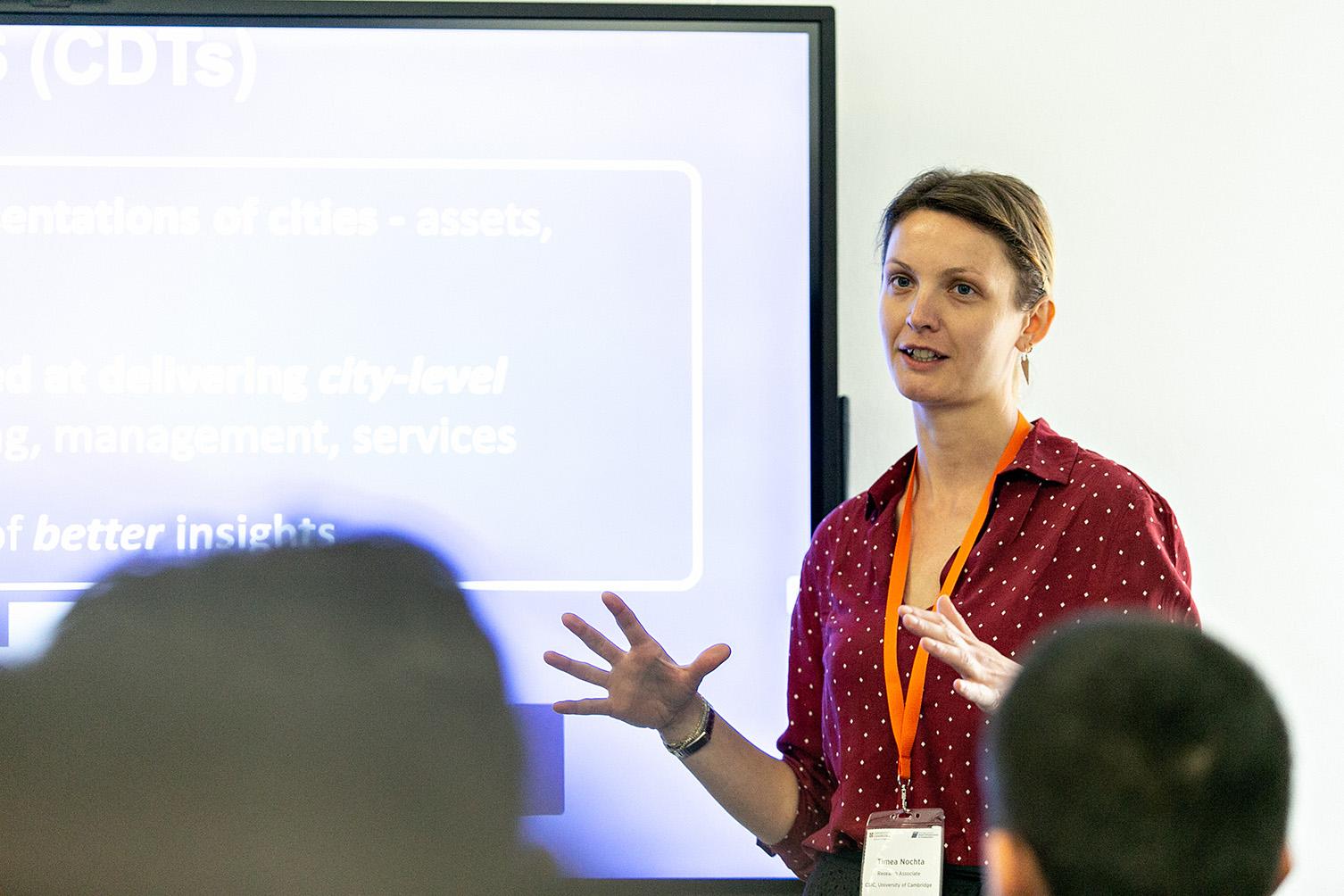
Watch our series of six short and fast-paced research presentations from CSIC Researchers on 10 June. These new presentations showcase a range of projects and demonstrate a body of research that builds the case for smart infrastructure solutions.
'Pile thermal integrity testing technique: Current development and future potential' – Jason Sun
The evaluation of the foundation pile requires inference and engineer judgement from a combination of direct and indirect testing of individual piles. Piles with deficiencies, which may cause structural instability or severe durability issues, need to be repaired or reconstructed at an early stage. The thermal integrity test measures concrete temperature changes during curing. Defects inside piles will appear as local temperature variations.
CSIC researchers have developed a data interpretation framework for thermal integrity test data to determine each defect's location, size, and severity. The framework follows an investigative staged process to establish and assess anomalies in the problematic regions along the pile employing the combined use of detailed finite element simulations and the actual temperature data from field tests. This staged process enables practitioners to follow a risk-based approach and decide whether to pursue subsequent construction. It opens up the possibility for repair and remedial work immediately after pile installation.
'Multi-sensing data: Enabling better-informed decisions for deteriorating infrastructure' – Dr Haris Alexakis and Dr Nikolaos Tziavos
Multi-sensing data, supported by statistical modelling and machine learning, may enhance our understanding of the structural deterioration of linear infrastructure. The talk will present results and discuss future research directions of two deteriorating bridge monitoring projects of the UK railway and motorway network.
'Urban Governance and Digital Technologies – Evolution or revolution?' – Dr Timea Nochta
In creating a market for smart city technologies, tech providers offer ‘revolutionary’ solutions that promise to fundamentally transform city planning and development, the management of urban infrastructures and services, and urban life and experience. In contrast with such promises, real-world implementations and the emerging “actually existing smart city” highlight how insufficient attention given to the complexity and social and political dimensions of cities lead to varying degrees of success - or an outright failure of tech solutionism. Based on original research, the talk will outline how an interdisciplinary socio-technical approach can bring value to evaluate the ongoing ‘smartification’ of cities.
'Risk-informed monitoring and management of bridges' – Dr Manu Sasidharan
The talk sets the scene for a risk-informed approach for bridge monitoring and management that considers the operational, structural, functional and environmental risks of disruptions or failure. The approach allows asset managers to arrive at a trade-off between the costs and value-of-information gathered through different monitoring techniques against a given risk level of bridge failure. It provides a rational means to inform inspection regimes, prioritise preventive maintenance of bridges in vulnerable areas of greatest failure risk, and identify cost-effective strategies for bridge monitoring, thereby improving the allocation of scarce monitoring and maintenance resources.
'Long-term performance monitoring of the Staffordshire railway bridges' – Dr Farhad Huseynov and Paul Fidler
In 2014, the Centre for Smart Infrastructure and Construction was given the opportunity to install fibre-optic instrumentation on two new railway bridges being constructed in Staffordshire, UK. Initially, the project provided an opportunity to explore the feasibility of installing fibre-optic strain sensors on both a pre-cast concrete bridge, and a composite bridge, during construction and to validate and demonstrate the concept of building self-sensing infrastructure for long-term monitoring.
A follow-on project in partnership with data scientists from the Data-Centric Engineering group at the Alan Turing Institute allowed for the collection of further data on a monthly basis and focussed on data processing algorithms for anomaly detection and spotting changes over time. Now, further funding from the Centre for Digital Built Britain (CDBB) and the installation of a 24/7 power supply at the bridge sites has permitted the installation of additional sensors and created an opportunity to work towards creating true Digital Twins of the bridges, with real-time structural health monitoring augmented by weigh-in-motion and structural analyses to give asset owners a minute-by-minute view of the assets.
This presentation will cover the history of the Staffordshire bridges projects, from the initial deployment to the present day, present the plans for the Digital Twins, and talk examine some of the difficulties encountered over the course of the three phases of the project.
'Long-term performance monitoring of the Staffordshire railway bridges…The inception of a Digital Twin' – Dr Miguel Bravo-Haro
A Digital Twin must represent physical reality at a level of accuracy suited to its purpose, and the extent of realism depends on three essentials: data, model and visualisation. This talk will show the progress of our research on implementing these key essentials at the early conception and construction of a Digital Twin of the Staffordshire railway steel bridge.
We hope you will join us to celebrate 10 years of CSIC at this special online event organised to mark the occasion.
